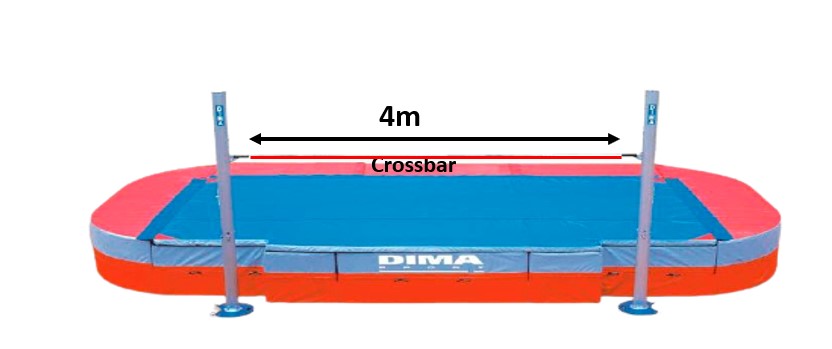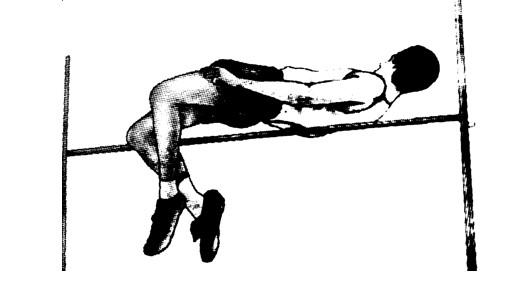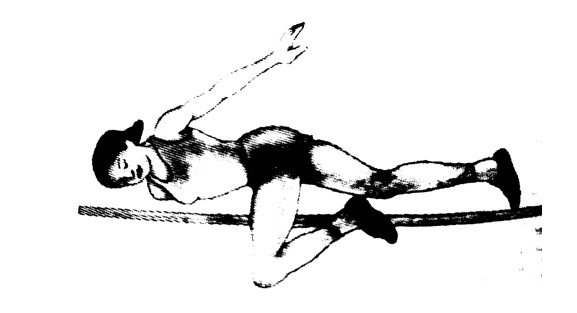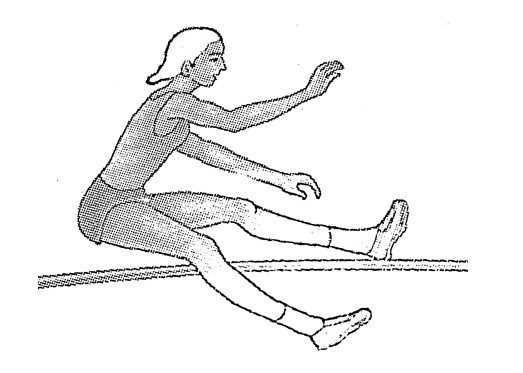Rules and Measurement in High Jump
High Jump
The high jump event is a track and field competition where athletes must jump over a horizontal bar placed at measured heights. The essential rules and measurements for the high jump include:
1.Starting Height:
The competition begins at a predetermined height, which varies depending on the level of the competition.
2. Incremental Heights:
After each round, the bar’s height is raised in specific increments, usually determined by the event officials or the meet rules.
3. Attempts:
Each athlete is given three opportunities to successfully clear a particular height. If the athlete fails to clear the height in all three attempts, they are eliminated from the competition at that height.
4. Clearance:
A jump is considered successful if the athlete clears the bar without knocking it off its supports. The jump is measured at the lowest point the bar was cleared.
5. Disqualification:
Athletes are disqualified if they make illegal attempts, such as diving headfirst or using any part of their body to hold or steady the bar.
Field Measurement in High Jump

Runway:
Athletes use a runway to approach the bar. This runway is typically between 15 and 25 meters (49 to 82 feet) long and should be at least 1.22 meters (4 feet) wide, providing enough space for a proper build-up of speed.
Take-off Zone:
The takeoff zone is a critical area where athletes begin their jump. This zone must be level, firm, and free of obstructions to allow for an optimal launch.
Landing Mats:
The landing area is equipped with cushioned mats to ensure the safety of the athletes. These mats should measure at least 5 meters (16 feet) in length and 3 meters (10 feet) in width, with a thickness of around 0.7 meters (2.3 feet) to absorb impact and prevent injuries.
Crossbar:
The crossbar is the horizontal rod that jumpers must successfully leap over during their attempt. It is adjustable and typically spans about 4 meters (13 feet) in length. The crossbar is lightweight yet durable, ensuring it can be easily dislodged if touched by the athlete.

Standards:
The standards are the vertical posts that hold the crossbar. These posts are adjustable to accommodate different heights and are usually placed 4.0 to 4.5 meters (13.1 to 14.8 feet) apart, allowing flexibility in setting the bar at various heights.
Height Measurement:
Accurate measurement of the height cleared by athletes is crucial. Heights are typically measured to the nearest 0.01 meters (0.4 inches) using precise equipment to ensure fairness and accuracy in the competition.
Technique and Fundamental Skills in High Jump
High jumpers require a combination of speed, strength, flexibility, and technique. Key techniques and skills include:
- Approach: The run-up to the jump, usually in a curved path, allows the athlete to build up speed and position their body correctly for takeoff.
- Takeoff: This is the crucial moment when the jumper leaves the ground. The takeoff leg should be strong and the jumper should drive their knee up to gain height.
- Flight: While in the air, the jumper must arch their back and twist their body to clear the bar. This phase requires excellent body control and coordination.
- Landing: The jumper aims to land safely on the mat, typically on their back or shoulders, to avoid injury.
Style of Jump
Throughout the history of high jump, athletes have used various techniques to maximize their performance. Here are some styles:
Fosbury Flop:
- Approach: Athletes use a curved run-up to generate speed and the optimal angle for takeoff.
- Takeoff: Jumpers launch off one foot, rotating their body so that their back faces the bar.
- Flight: The body arches backward over the bar, leading with the head and shoulders, followed by the hips and legs.
- Landing: Athletes land on their back or shoulders on a cushioned mat.
- This style, named after Dick Fosbury, transformed the high jump and is now the most commonly used technique due to its efficiency in clearing greater heights.

Straddle Technique:
- Approach: Athletes run in a straight line toward the bar.
- Takeoff: The takeoff is typically from the foot closest to the bar.
- Flight: The jumper’s body goes over the bar face-down, with the lead leg followed by the rest of the body.
- Landing: Athletes land on their hands and one foot.
- This technique was popular before the Fosbury Flop and is known for its straightforward approach and execution.

Western Roll:
- Approach: Athletes use a straight or slightly curved run-up.
- Takeoff: The takeoff leg is usually the one closest to the bar, with the opposite leg leading.
- Flight: The jumper’s body rolls sideways over the bar, with the lead leg going over first, followed by the hips and trailing leg.
- Landing: Athletes land on their side or back.
- The Western Roll was widely used before the Straddle technique gained popularity and allowed for a smooth transition over the bar.

Eastern Roll:
- Approach: The jumper uses a straight or slightly curved run-up to build momentum.
- Takeoff: The athlete takes off from the foot closest to the bar, utilizing a powerful push to gain height.
- Flight: The jumper’s body rotates sideways as they go over the bar, with the lead leg crossing first, followed by the hips and the trailing leg. The body remains fairly upright during this motion.
- Landing: The athlete lands on their side, with the leading leg and arm hitting the mat first, followed by the rest of the body.

Scissors Jump:
- Approach: Athletes run in a straight line towards the bar.
- Takeoff: The takeoff is usually from the inner foot.
- Flight: The legs move in a scissoring motion, with one leg clearing the bar first, followed by the other.
- Landing: Athletes land on their feet.
- This is one of the earliest high jump techniques and is often used in training to help athletes develop basic jumping skills.

Each of these styles has contributed to the evolution of high jump techniques, ultimately leading to the dominance of the Fosbury Flop, which allows athletes to achieve greater heights with more efficient mechanics.
Officials of High Jump
The high jump event is overseen by several officials who ensure the competition runs smoothly and fairly. Key officials include:
- Chief Judge: The chief judge oversees the entire competition, ensuring that all rules are followed and resolving any disputes.
- Field Judges: Field judges assist the chief judge by measuring the height of the bar, recording attempts, and verifying if jumps are successful.
- Timekeeper: Ensures that athletes adhere to the time limits for each attempt.
- Recorder: Keeps track of the results, including successful jumps and the heights cleared by each athlete.
These roles ensure the competition is conducted fairly and accurately, maintaining the integrity of the sport.



